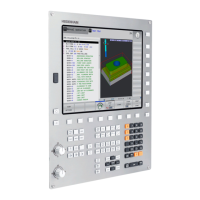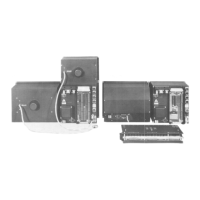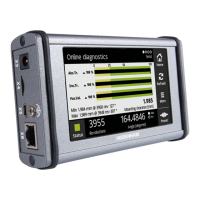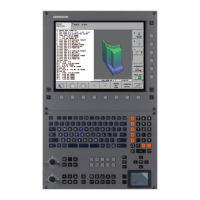60
4 Programming: Fundamentals of NC, File Management,
Programming Aids, Pallet Management
4.9 Creating Text Files
You can use the TNC’s text editor to write and edit texts. Typical
applications:
■
Recording test results
■
Documenting working procedures
■
Creating formularies
Text files are type .A files (ASCII files). If you want to edit other
types of files, you must first convert them into type .A files.
Opening and exiting text files
ú
Select the Programming and Editing mode of operation.
ú
To call the file manager, press the PGM MGT key.
ú
To display type .A files, press the SELECT TYPE and then the
SHOW .A soft keys.
ú
Select a file and open it with the SELECT soft key or ENT key,
or create a new file by entering the new file name and confirming
your entry with the ENT key.
To leave the text editor, call the file manager and select a file of a
different file type, for example a part program.
Editing texts
The first line of the text editor is an information headline which
displays the file name, and the location and writing mode of the
cursor:
File: Name of the text file
Line: Line in which the cursor is presently located
Column: Column in which the cursor is presently located
Insert: Insert new text, pushing the existing text to the
right
Overwrite: Write over the existing text, erasing it where it is
replaced with the new text.
The text is inserted or overwritten at the location of the cursor. You
can move the cursor to any desired position in the text file by
pressing the arrow keys.
The line in which the cursor is presently located is depicted in a
different color. A line can have up to 77 characters. To start a new
line, press the RET key or the ENT key.
4.9 Creating Text Files
Cursor movements Soft key
Move one word to the right
Move one word to the left
Go to the next screen page
Go to the previous screen page
Go to beginning of file
Go to end of file
Editing functions Key
Begin a new line
Erase the character to the left
of the cursor
Insert a blank space
Switch between upper and lower +
case letters
Ekap4.pm6 30.06.2006, 07:0360
www.EngineeringBooksPdf.com
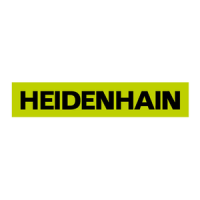
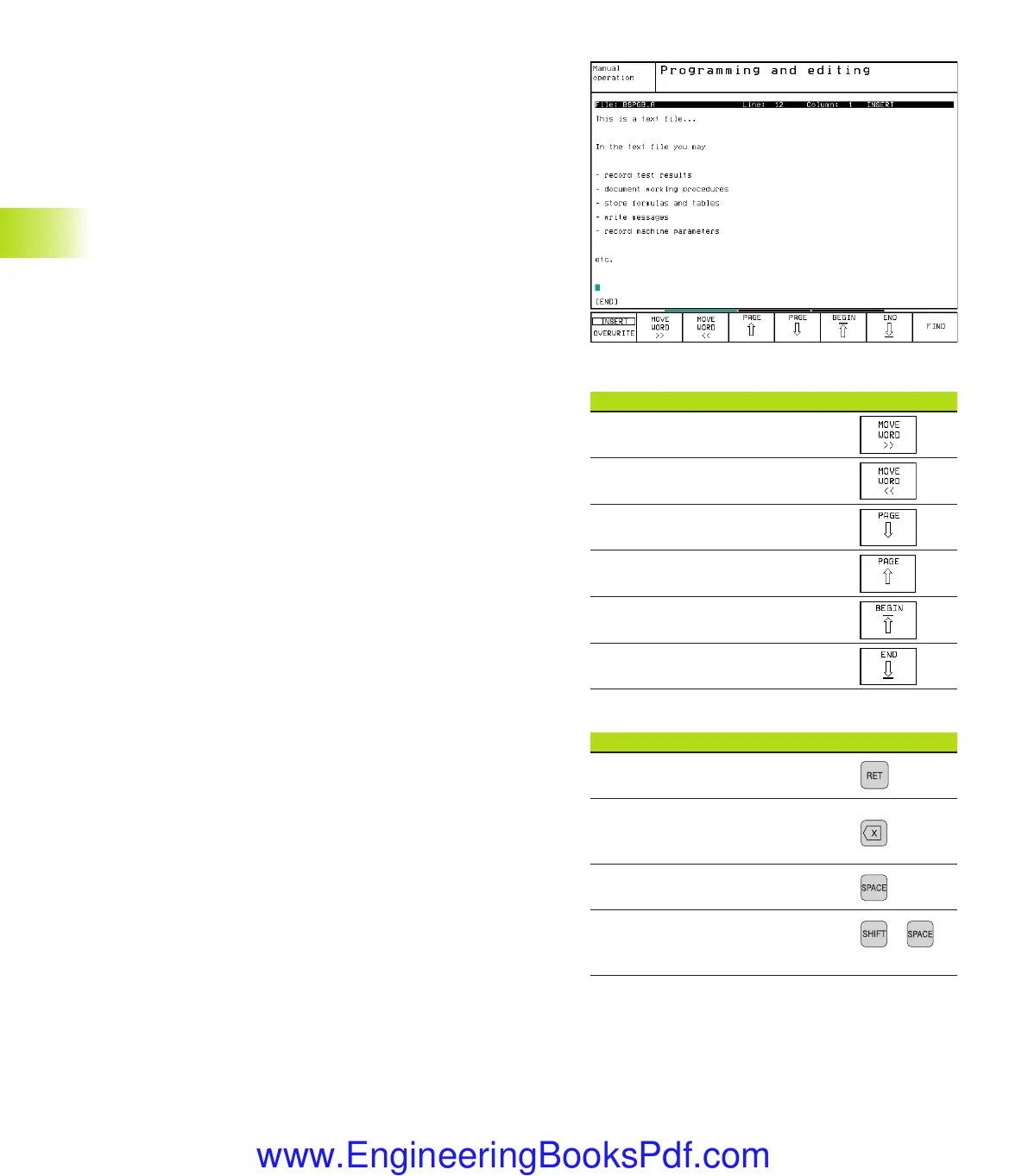